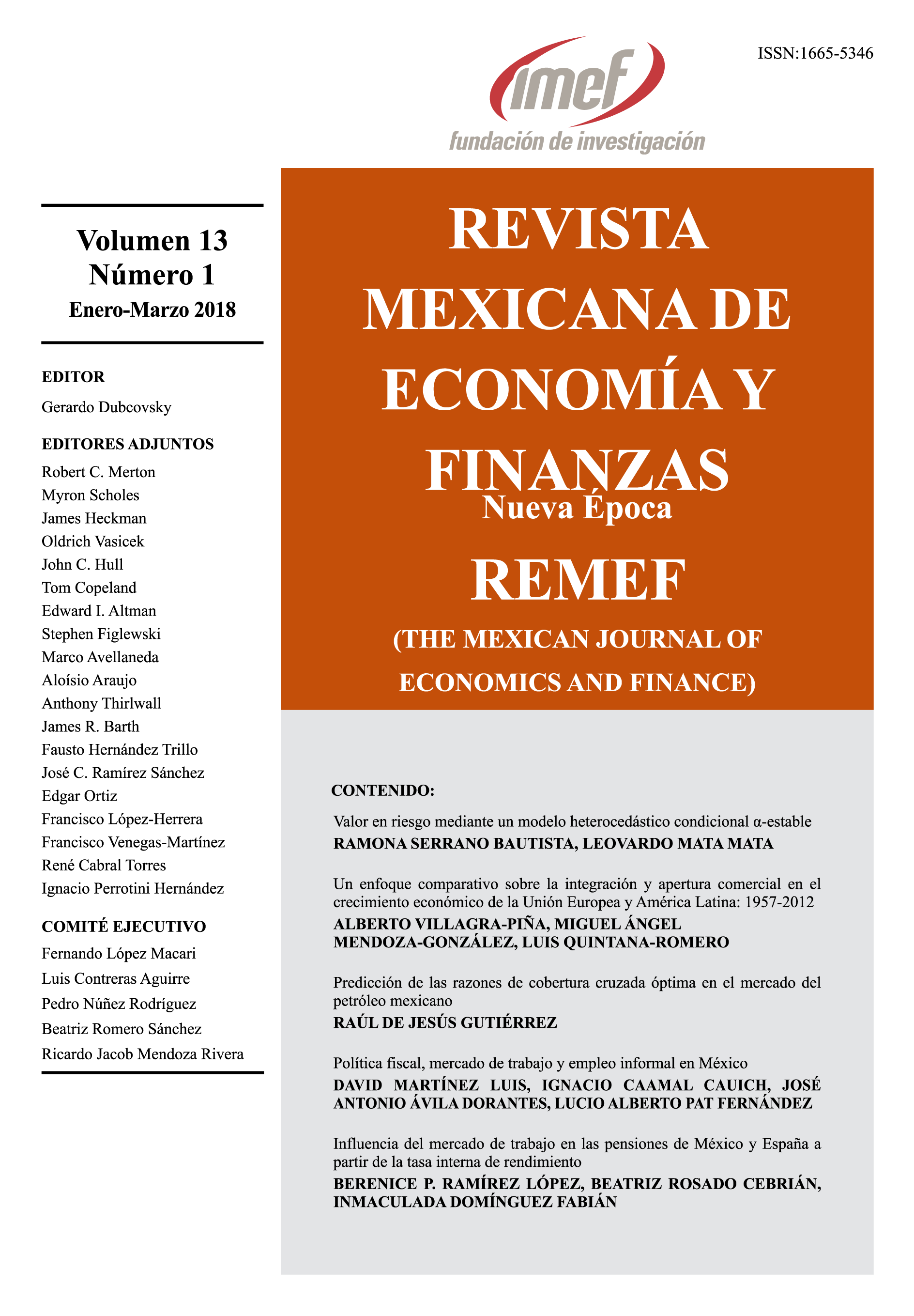Forecasting of the Optimal Cross Hedge Ratios in Mexican Crude Oil Market
DOI:
https://doi.org/10.21919/remef.v13i1.259Keywords:
Modelos GARCH bivariados, Razón de cobertura cruzada óptima, Mercados de futuros sobre petróleo, Prueba de Hansen.Abstract
This aim of this work is to evaluate the performance of four bivariate GARCH models and the ordinary least squares (OLS) method to predict the cross hedging ratios of minimum variance of Mexican crude oil in the 2000-2015 period. The methodology used is the test for superior predictive ability (SPA) by Hansen (2005). The results of the SPA test show that the OLS method provides better out-of-sample predictions in 15 out of 30 cases, followed by the DVEC model with 5 out of 30 cases, whereas the predictive performance of the BEKK and EC-BEKK models only outperform alternative models in 3 cases. The main limitation is that the bivariate GARCH models do not reflect asymmetric effects on crude oil prices. The findings have important implications for government authorities and consumers because they enable designing efficient and transparent cross-hedging strategies to reduce exposure to oil price risk at lower transaction costs. The contribution of this study is to investigate the efficiency of dynamic hedge ratios in the Mexican crude oil market with WTI and Brent crude oil futures. Finally, it is concluded that the incorporation of the long-run equilibrium relationship in the volatility models is insufficient to minimize the variance in the hedging portfolio.
Downloads
Metrics
Published
How to Cite
Issue
Section
License
PlumX detalle de metricas








